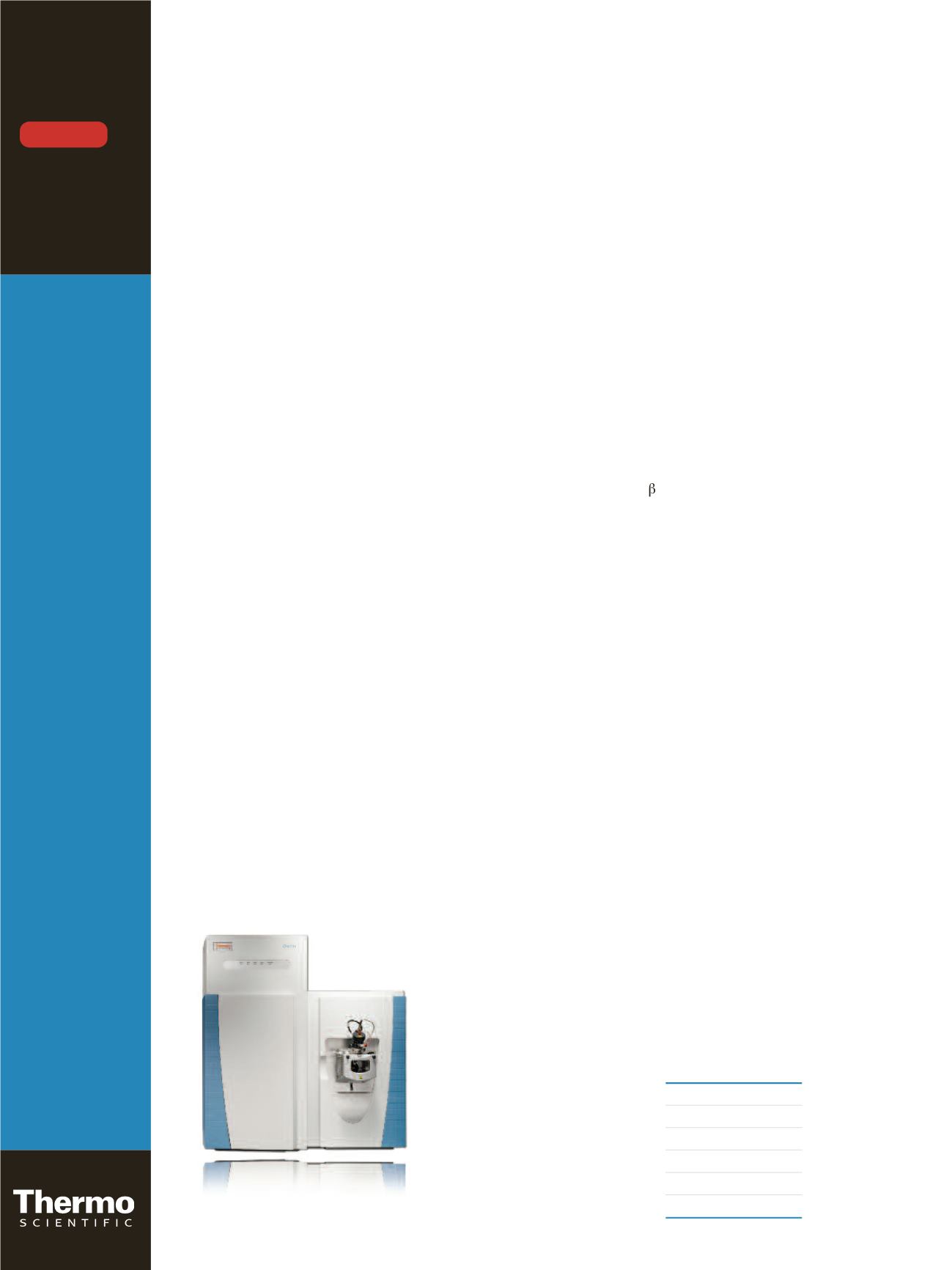

Screening in Equine Doping Control Analysis
with Ultrahigh Resolution and Accurate Mass
Yves Moulard, Yves Bonnaire, Laboratoire des Courses Hippiques, Verrières-Le Buisson, France;
Bénédicte Duretz, Thermo Fisher Scientific, Les Ulis, France; Dennis Nagtalon, Thermo Fisher Scientific, San Jose, CA, USA
Introduction
Triple quadrupole or tandem mass analyzers have been
used most frequently in the accurate identification, confir-
mation, and quantitation of prohibited compounds in a
single analysis. In addition, ion trap and quadrupole time-
of-flight mass analyzers have been useful for screening and
confirming results. However, these technologies cannot
address the main requirements of equine doping control
analysis such as:
• Data re-interrogation
• Analyze and monitor a vast number of compounds
• Fast and easy method development, instrument
operation, and data interpretation
• Efficient separation of analytes from interferences
present in the matrix
• Highly confident identification of compounds
Here we present a screening approach that uses ultra-
high resolution (R = 50,000) and accurate mass in positive
and negative mode for the screening of illicit substances in
urine matrix using the Thermo Scientific Exactive bench-
top mass spectrometer. More than 120 analytes are
screened using this method. Confirmation is made using
the exact mass of the analytes in positive and negative
mode (if available) and the retention time.
Goal
To demonstrate a new approach using ultrahigh resolution
(> 50,000) and accurate mass for the screening of illicit
substances in a urine matrix using the Exactive
™
mass
spectrometer, a new high performance benchtop LC/MS
instrument equipped with Thermo Scientific Orbitrap
technology, for doping control analysis.
Key Words
• Exactive
• LC/MS
• Orbitrap
Technology
• Forensic
Toxicology
• ToxID Software
Application
Note: 496
Experimental
Sample preparation
Solid phase extraction (SPE) was used for sample pre-
treatment and clean up. The details of the procedure are
described below.
• To 5 mL of urine add 25 µL of hydrocortisone d3 at
10 µg/mL
• Add 1 mL of phosphate buffer
• Add 50 µL of glucuronidase and 50 µL of protease
• Incubate for 1 hour at 55 °C
• Centrifuge at 4,000 rpm for 30 minutes
• Transfer the supernatant to a tube
• Add 5 mL of water
• Condition the C18-HF cartridge with 3 mL of methanol
and 3 mL of water
• Load the sample and wash the cartridge with 3 mL of
water and 3 mL of hexane
• Elute with 3 mL of a mixture containing
dichloromethane and ethanol
• Evaporate to dryness
• Reconstitute with 100 µL of a mixture containing water
and acetonitrile (80/20)
Instrumentation Method
HPLC conditions
Chromatographic analyses were performed using
Shimadzu binary pumps LC-20ADxr (Champs sur Marne,
France). The chromatographic conditions were as follows:
Column:
Reversed-phase, silica-based C18
(3.5 µm, 150 x 2.1 mm) column
Flow rate:
0.3 mL/min
Injection volume: 10 µL
Mobile phase:
A: Water containing 0.1% formic acid
B: Acetonitrile containing 0.1% formic
acid
Gradient:
T(min)
A(%)
B(%)
0.0
80
20
5.0
80
20
20.0
50
50
25.0
0
100
25.2
80
20
30.0
80
20
Figure 1. Thermo
Scientific Exactive
high performance
benchtop LC/MS
system
DOWNLOAD


















